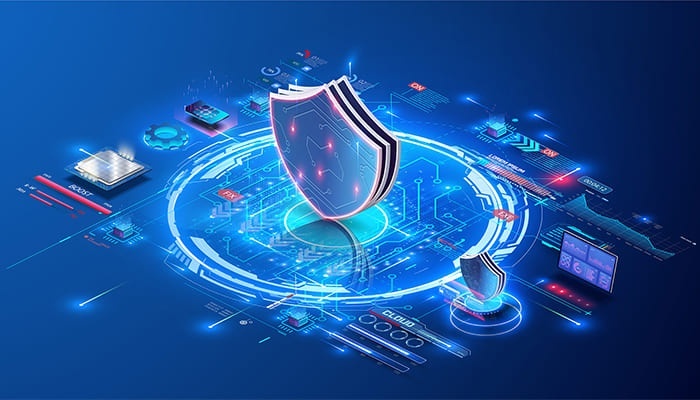+49 800 / 27 00 001
We are thrilled to serve you
Types of Malware

There are many different types of malware, each with specific functions and goals. Here are some of the most common types of malware:
- dropper or loader
Description: The dropper or loader is a special type of malware that serves as a tool to deliver and execute other malicious software (see descriptions below) on a target system.
Function: First, the infected system is analyzed. Depending on the system's equipment and location within IT infrastructure, one of the malware types described below is loaded.
- Viruses
Description: Viruses are malicious programs that insert themselves into other programs or files and spread when these programs or files are executed or opened.
Function: They can damage files, delete data or crash the system.
- Worms
Description: Worms are stand-alone malware programs that spread without human intervention by exploiting vulnerabilities in network protocols or operating systems. The aim of worms is to find vulnerabilities in order to give themselves better rights, e.g. administrator rights.
Function: They can overload networks by spreading quickly and widely.
- Trojans (Trojan horses)
Description: Trojans disguise themselves as useful software (e.g. free tools or computer games) to trick users into downloading and running them.
Function: They can set up backdoors that allow attackers to take control of the system.
- Spyware
Description: Spyware secretly collects information about a user's activities and sends it to the attacker.
Function: It can steal passwords, credit card numbers and other sensitive data.
- Adware
Description: Adware displays unwanted advertisements on the user's computer.
Function: It can track user activity and display targeted ads based on that activity.
- Ransomware
Description: Ransomware encrypts files on the infected system and demands a ransom for decryption.
Function: It can block access to important data or entire systems until the ransom is paid.
- Cryptominer
Description: Cryptominers (also called cryptojackers) are a special type of malware that is used to secretly use the computing power of an infected computer or network to mine cryptocurrencies.
Function: Cryptominers hijack the CPU, GPU and other system resources of the infected computer to perform complex calculations. This can significantly slow down the system and shorten the life of the hardware due to the increased load.
- Keylogger
Description: Keyloggers log a user's keystrokes and send this information to the attacker.
Function: They can capture passwords, credit card numbers and other confidential information.
- Botnets
Description: Botnets consist of networks of malware-infected computers that are remotely controlled by an attacker.
Function: They can be used for DDoS attacks, spam distribution or cryptocurrency mining.
- Backdoor
Description: Backdoors are methods used to secretly gain access to a computer or network.
Function: They allow attackers to control systems or access confidential data without being detected.
- Scareware
Description: Scareware deceives users with fake warning messages to get them to install more malware or buy unnecessary software.
Function: It exploits fear and panic to trick users into actions that further compromise their computer.
- Bait
Description: This malware is a special form. USB sticks or other USB devices (e.g. e-cigarettes) are prepared in such a way that they start the loader or dropper as soon as they are connected to a computer.
Function: The USB device behaves like a keyboard (even if it doesn't look like one) and acts as if the user is consciously typing something. A command is then executed via the command line to start the loader, which is often also located on the USB device.



